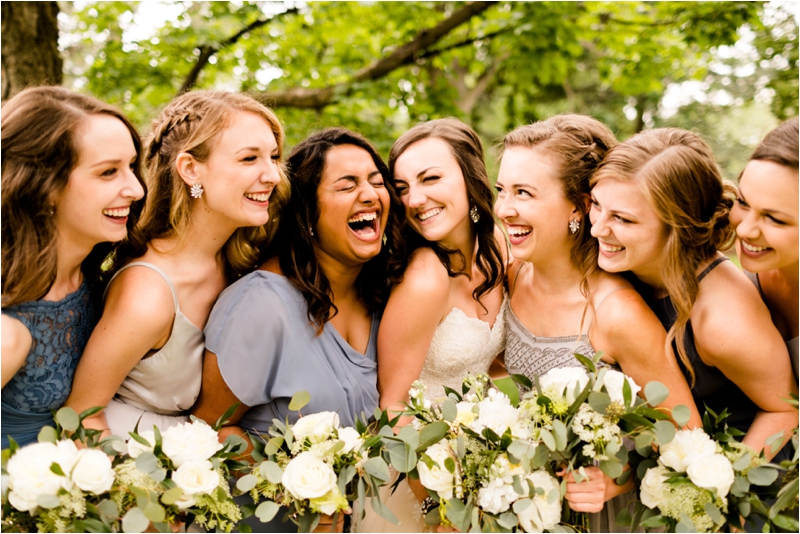
Picking between a mirrorless camera and a DSLR for weddings can feel like choosing between two amazing dance partners—each has its rhythm, strengths, and quirks. And in the fast-paced world of weddings, where every second counts, the gear you rely on can make all the difference. The big question: Is mirrorless really taking over, or does the DSLR still hold its ground?
With so many advancements in camera technology, wedding photographers today have more options than ever when it comes to choosing the right gear. Whether you’re just starting your journey and wondering how to become a wedding photographer or you’re refining your setup with the best wedding photography gear, the decision between mirrorless and DSLR cameras plays a huge role in shaping your workflow. Let’s break it down so you can make the best call for your style and workflow.
Table of Contents
Mirrorless vs DSLR for Wedding Photography: An In-Depth Guide
This debate isn’t just about specs—it’s about how you work. Mirrorless cameras have been making waves, and according to recent trends, around 73% of professional photographers now shoot with mirrorless. That’s a big shift. But why? And should you follow suit?
Understanding the Basics: Mirrorless and DSLR Cameras Explained
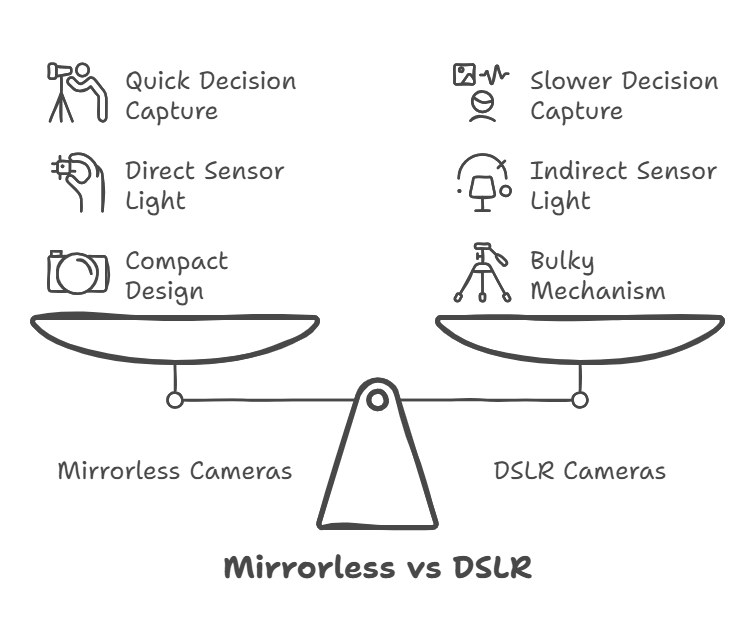
What Is a Mirrorless Camera?
A mirrorless camera is exactly what it sounds like—no mirror. Unlike a DSLR, which uses a mirror to reflect light into an optical viewfinder, a mirrorless camera sends light straight to the sensor, displaying a live preview on an electronic viewfinder (EVF) or LCD screen.
The result? A smaller, lighter body with real-time exposure previews—ideal for unpredictable wedding lighting.
What Is a DSLR Camera?
DSLRs are the tried-and-true workhorses of photography. They use a mirror to bounce light into an optical viewfinder, giving you a real-world view of your scene. When you press the shutter, the mirror flips up, letting light hit the sensor.
Decades of refinement have made DSLRs reliable and familiar, which is why many wedding photographers still swear by them.
The Importance of Choosing the Right Camera for Wedding Photography
Your camera needs to feel like an extension of your hands. At a wedding, you’re moving non-stop, balancing between capturing quiet, emotional moments and fast-paced action.
- Mobility matters – After eight to twelve hours on your feet, even a small weight difference can be huge.
- Silent shooting is gold – Some ceremonies are so quiet that even a subtle shutter click feels loud.
- Autofocus speed can make or break a shot – You only get one chance at that first kiss or a teary-eyed father-daughter dance.
Now, let’s dig into the key differences that could impact your workflow.
Size and Weight: Portability in Long Wedding Shoots
Mirrorless cameras are smaller and lighter than DSLRs, which makes a difference after hours of shooting. A full-frame mirrorless system can weigh 30-40% less than its DSLR counterpart.
That weight savings? It’s noticeable by the time you hit the dance floor at the reception. But if you’re used to a DSLR, a mirrorless body might feel too light at first. Some photographers even prefer the heft of a DSLR for balance, especially with big lenses.
Focusing Systems: Autofocus Capabilities and Performance
Electronic Viewfinder vs Optical Viewfinder
- Mirrorless cameras show you exactly what your final image will look like in the EVF—no surprises with exposure or white balance.
- DSLRs give you a more “natural” view through an optical viewfinder, but you don’t see exposure adjustments in real time.
Focus Point Spread and Accuracy
Mirrorless cameras have edge-to-edge autofocus, meaning you can focus anywhere in the frame without recomposing. DSLRs, on the other hand, rely on a set number of AF points, usually clustered in the center.
For fast-moving subjects (like an excited flower girl sprinting down the aisle), mirrorless cameras with eye-tracking autofocus have a serious advantage.
Image Quality and Sensor Performance
Low Light Handling and Image Stabilization
Both mirrorless and DSLR cameras deliver stunning image quality, but there are a few things to consider:
- Dynamic range & color depth – Both systems are excellent here, though mirrorless cameras give you a live preview of exposure, which helps in tricky lighting.
- Low light performance – Modern mirrorless cameras often have built-in image stabilization (IBIS), helping with sharp shots in dim settings.
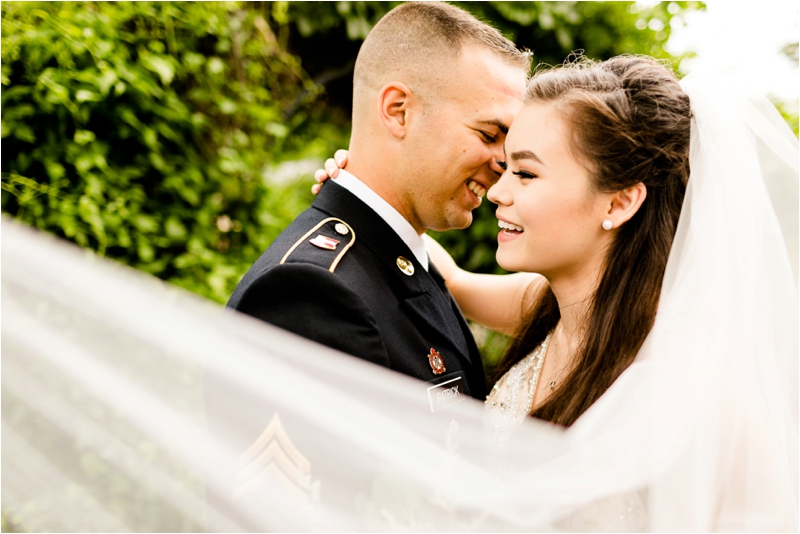
Battery Life: Endurance for Wedding Day Marathons
Here’s one area where DSLRs still dominate.
- DSLRs: Typically 800-1500 shots per charge
- Mirrorless cameras: Around 300-400 shots per charge
Mirrorless cameras drain batteries faster because of their electronic viewfinders and screens. If you go mirrorless, plan on packing extra batteries—at least three to four for a full wedding day.
Practical Considerations for Wedding Photographers
Silent Shooting and Minimal Disruptions
Ever shot a ceremony where it’s so quiet you can hear the couple’s breathing? Mirrorless cameras can shoot completely silently with their electronic shutters, making them perfect for discreet moments.
DSLRs, on the other hand, always have a mechanical shutter sound. Some have a quiet mode, but it’s still noticeable.
Lens Options and Versatility
- DSLRs: More lenses available, including countless third-party options at lower prices.
- Mirrorless: Fewer native lenses, but growing rapidly. You can adapt DSLR lenses, though autofocus performance may suffer.
For wedding photography, you’ll likely want:
- 24-70mm for all-purpose coverage
- 70-200mm for candid moments and ceremonies
- 35mm, 50mm, or 85mm primes for portraits and low-light situations
Canon and Nikon have been expanding their mirrorless lens lineups, but if you already own a lot of DSLR glass, switching over can be pricey.
Cost Considerations: Is Mirrorless Worth the Investment?
Professional mirrorless bodies might cost more upfront, but they often include features that save time in post-processing. We’ve found that while DSLRs might seem more budget-friendly initially, the true cost comes down to your specific needs and shooting style. Consider these factors:
- Initial investment in bodies and lenses
- Backup equipment requirements
- Potential for future upgrades
- Resale value
- Maintenance costs
When building your wedding photography camera kit, remember that reliability and versatility often justify a higher initial investment. Whether choosing mirrorless or DSLR, prioritize systems that offer room for growth and adaptation as your style evolves.
Advantages and Disadvantages: Mirrorless vs DSLR for Weddings
When comparing dslr vs mirrorless photos and overall performance, each system brings distinct advantages and challenges to wedding photography. Let’s break down these differences to help you make an informed decision for your wedding photography business.
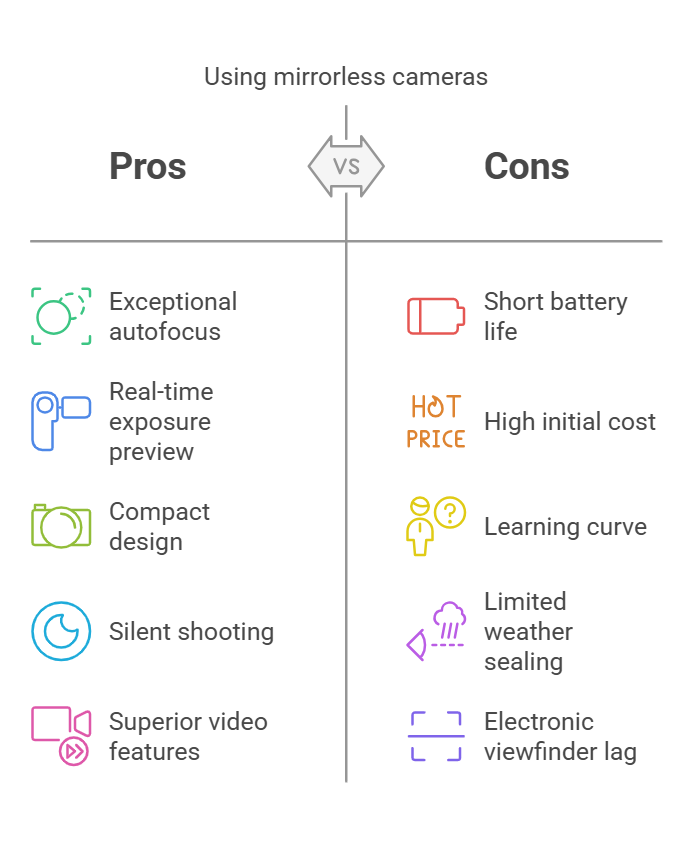
Why Choose Mirrorless?
✅ Smaller & lighter – Easier to carry for long hours
✅ Better autofocus – Tracks faces & eyes with AI-powered precision
✅ Silent shooting – Ideal for ceremonies
✅ In-body stabilization – Great for handheld low-light shots
✅ Electronic viewfinder – WYSIWYG (what you see is what you get)
🚫 Shorter battery life – You’ll need extra batteries
🚫 Expensive lenses – Some high-end glass is pricey
🚫 Adjustment period – If you’re used to DSLRs, there’s a learning curve
Why Stick with a DSLR?
✅ Longer battery life – Lasts all day without swapping batteries
✅ Huge lens selection – More options, often at better prices
✅ Durable & reliable – Proven performance in all conditions
✅ Optical viewfinder – No lag or digital noise in low light
🚫 Heavier & bulkier – Can cause fatigue during long weddings
🚫 Louder shutter – Not ideal for quiet moments
🚫 Slower autofocus – Struggles with fast-moving subjects
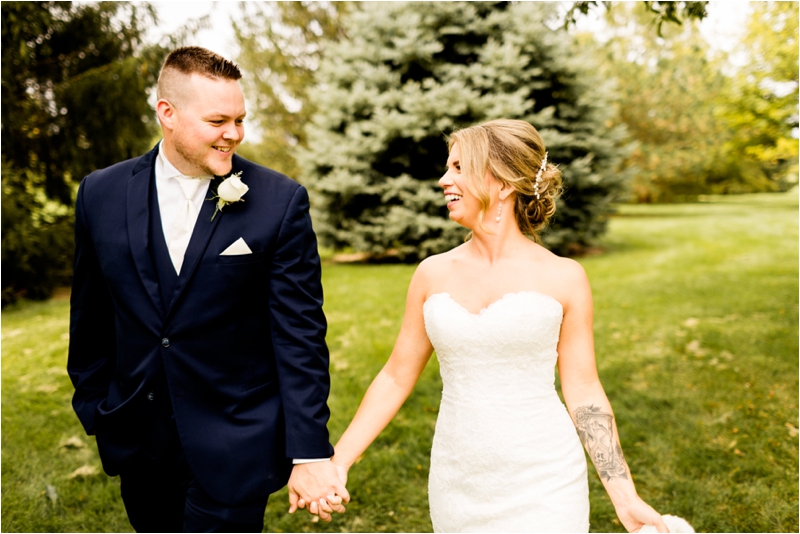
Our Opinion On Which One Should You Choose?
If You’re Just Starting Out:
- A mirrorless system is the future. If budget allows, invest in a two-body mirrorless setup with fast primes for weddings.
If You’re a Seasoned Pro:
- Happy with your DSLR? No rush to switch. But if you want better autofocus, silent shooting, and less weight, mirrorless is worth considering.
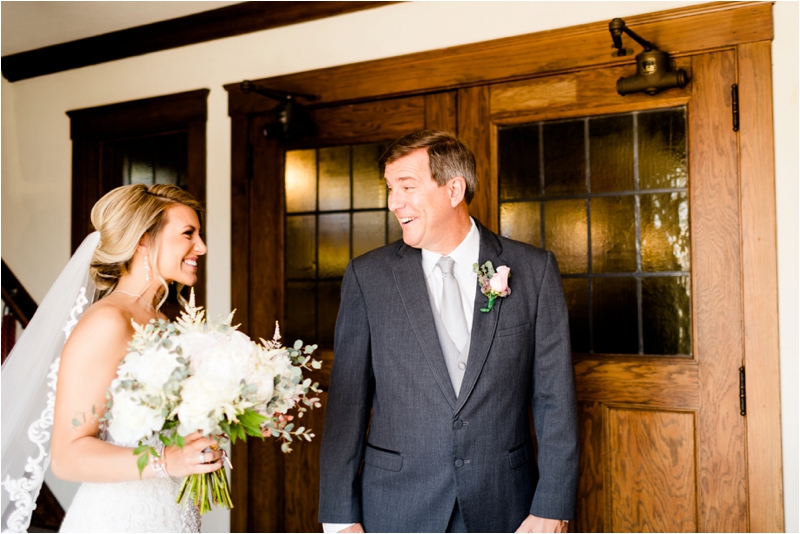
Conclusion: Making an Informed Decision for Unforgettable Wedding Photography
Let’s cut to the chase about choosing between mirrorless and DSLR cameras for wedding photography – both can create beautiful images, and that’s what really matters. Think of it this way: both systems can capture incredible wedding images. What matters most is your skill, creativity, and ability to tell a story through your lens.
If you want the lightest, most advanced, and future-proof option, mirrorless is leading the way. If you prefer a familiar, reliable, and long-lasting system, a DSLR still holds strong.
No matter which you choose, master your gear, refine your style, and focus on capturing unforgettable moments—because that’s what truly makes a wedding gallery stand out.